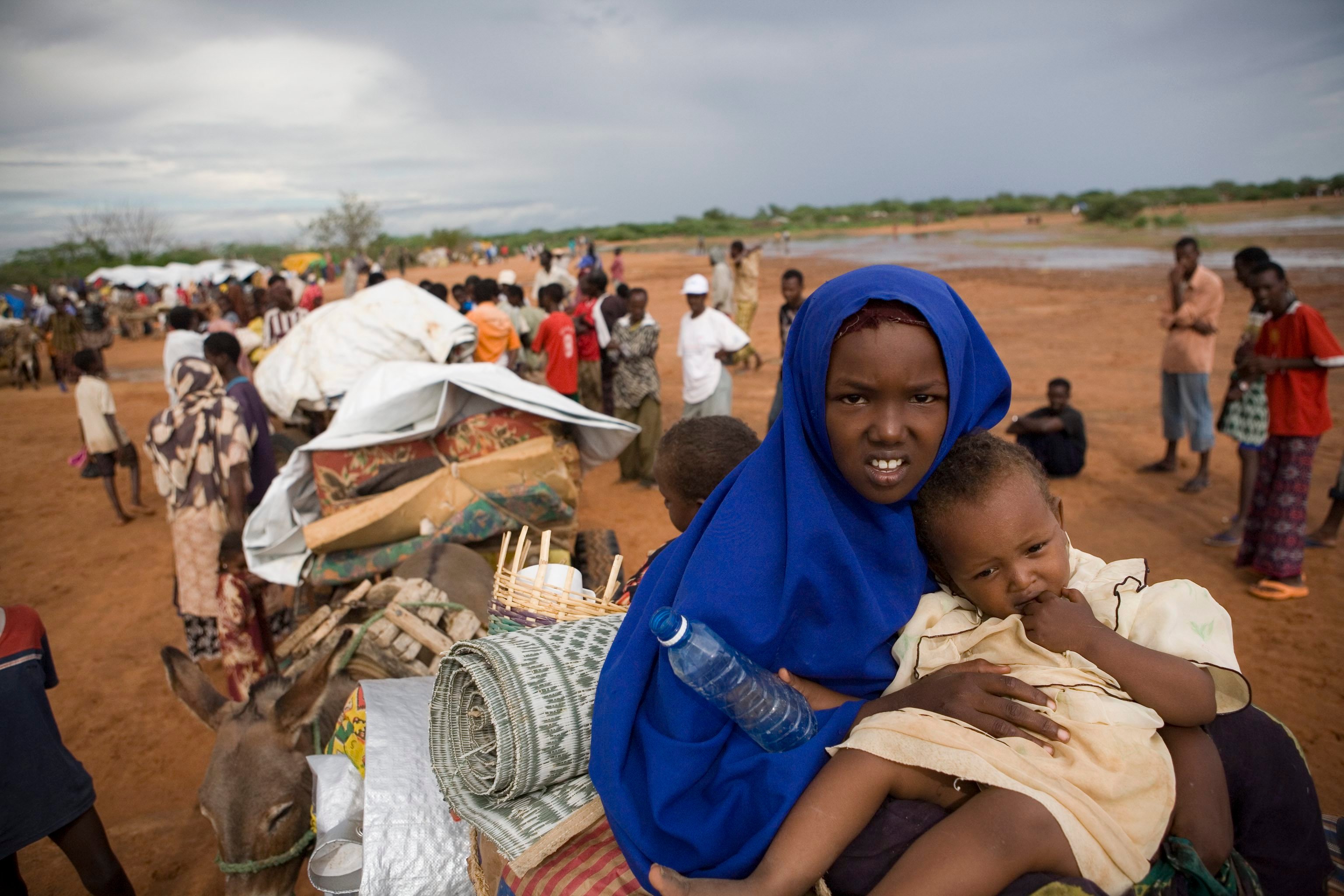50,000 civilians flee Somalia in first quarter, double from a year earlier
50,000 civilians flee Somalia in first quarter, double from a year earlier

GENEVA, April 29 (UNHCR) - The UN refugee agency said Friday that an increasing number of Somali civilians were fleeing their country amid the deteriorating security situation, with 50,000 arriving in neighbouring countries in the first quarter of this year compared to 23,000 in the same period in 2010.
"UNHCR is alarmed by the continuing deterioration of the situation in Somalia," the agency's chief spokesperson, Melissa Fleming, told journalists in Geneva. "Kenya again received most of the new arrivals - more than 31,400. Virtually all of them have been registered by the Kenyan authorities and UNHCR in Dadaab refugee camp complex - on average some 10,000 a month," she added.
UNHCR has also noted a sharp rise in the number of Somali refugees arriving in Ethiopia. "We registered more than 12,200 Somalis crossing, mostly through the Dollo Ado corridor," Fleming said, adding that UNHCR was running two refugee camps there. "Both camps are fast reaching their maximum capacity," she noted.
The majority of these refugees came from the Bay and Bakol regions of southern and central Somalia - two of the major conflict zones in the country. They all speak of a grim situation inside the country, marked by relentless violence and human rights abuses. Somali refugees told UNHCR staff about forced conscription by some of the warring parties and crippling drought.
The dire situation in Somalia is leaving no alternative for many, forcing them to take a desperate decision to cross the Gulf of Aden or the Red Sea to Yemen. Despite the risks involved, and despite the anti-government unrest in Yemen, more than 22,000 refugees and migrants from the Horn of Africa arrived on Yemeni shores during the first three months of this year.
This is more than twice the number of arrivals during the first quarter of 2010, when some 9,400 people reached Yemen. It also topples the record-breaking first quarter of 2009, when nearly 17,000 refugees and migrants crossed the Gulf of Aden and the Red Sea.
Similar to 2010, Somalis continue to represent only every fourth arrival in Yemen, although their number doubled in comparison to the first quarter of 2010 (3,200 in 2010 to 6,000 in 2011). Ethiopian migrants, whose arrivals almost tripled (nearly 17,000 in 2011), continue to account for 75 per cent of all of the crossings.
"Some of the new arrivals told us that they were unaware of the political and social upheaval in Yemen, but many coming from Somalia said they had no other option but to flee. For these Somali refugees the situation in Yemen was still, by comparison, much safer than the one back home," Fleming said in Geneva.
Somalia remains one of the countries generating the highest number of refugees and internally displaced people in the world. An estimated 1.4 million Somalis are displaced within the country while another 680,000 live overseas as refugees.




